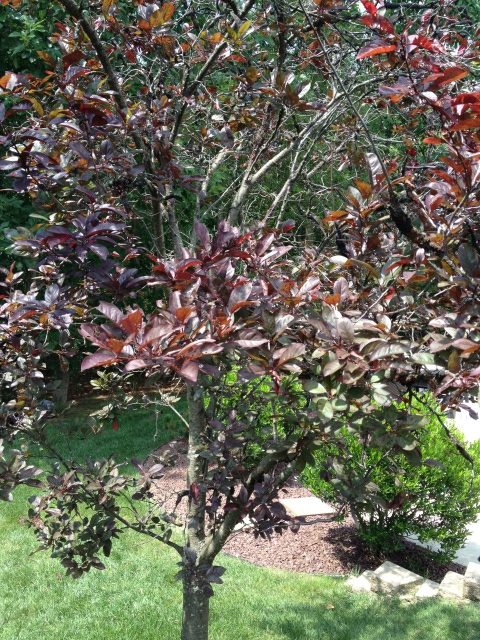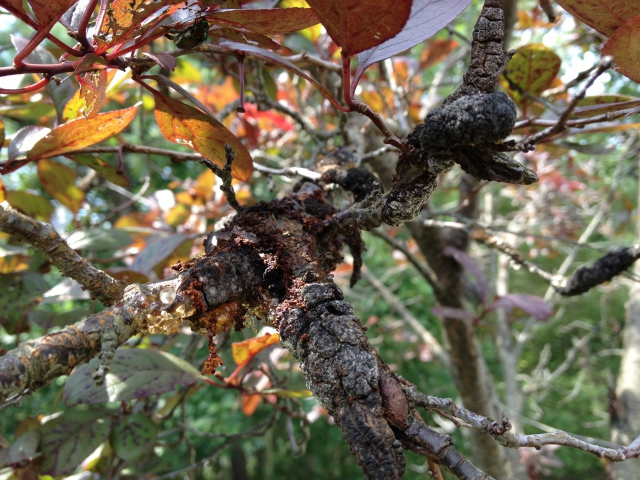Question
 Tree
Tree  Disease
Disease
Hello,
I have a tree in my backyard that is showing signs of disease. I think it is a Flowering Plum Tree (hopefully the attached pictures can be used to confirm this).
In the past year, it has developed some significant growth on a bunch of branches and some of those branches are dying. Hopefully, you can see the diseased growth in one of the attached photos.
Is there any chance you can identify the type of disease, and also is there any remedy so I can save the tree? Incidentally, there is a tree of the same variety on the other side of the yard that has started showing signs of the same disease in the past month or two.
Thanks!
Mike
AnswerThis sounds like is black knot of plums. Plum trees infected with this fungus disease become stunted and grow poorly. Within a few years, severely infected trees become almost worthless. Cherry trees may also be attacked by black knot, as well as wild species of both plums and cherries.
Black knot is a descriptive name for the problem since the black, warty knots which form on branches of infected trees are highly visible. Knots frequently become quite numerous and may be found on most of the branches.
The first indication of the presence of black knot is usually the swelling of small twigs. As the disease progresses, elongated swollen areas appear on older limbs. These knots are greenish in color and relatively soft in texture when they first appear. As the growing season progresses, the knots become coal black and very hard.
Black knot is caused by a fungus. The disease gets its start in early spring from spores which are produced on the knots. Spores are carried by wind to other branches where they germinate and cause infection. Such infection of new branches takes place in the spring during full bloom and continues until shuck fall (the stage when young fruit are just visible). By early fall, the knots have become visible and during the next season they enlarge rapidly.
A combination of control measure should be used to control black knot:
Once the disease appears in trees, the knots should be removed. When they occur on twigs and small branches, prune out the infected branches about two or three inches below the knot.
The knots on large branches and trunks can be cut out. This is done most successfully during August when the fungus does not extend far beyond the visible swelling. Remove the diseased wood and about one inch of clean wood around the knot. The knots should be removed before growth begins in the spring, and taken from the orchard, as they will continue to produce spores for several weeks after removal.
In severe cases, it may be necessary to destroy badly infected trees.
Plum trees should receive a dormant season application of lime-sulfur fungicide. This will help eliminate overwintering black knot spores, as well as spores of other fungi which may be present.
New plantings of plums should not be made next to old ones with black knot. Wild plums and cherries should be removed from fence rows and wooded areas for at least 500 feet from the new planting.
When selecting plum varieties for new plantings, consider using varieties which are resistant to black knot.
Here is a web link to more information and pictures.
http://www.ct.gov/caes/lib/caes/documents/publications/fact_sheets/plant_patholo







